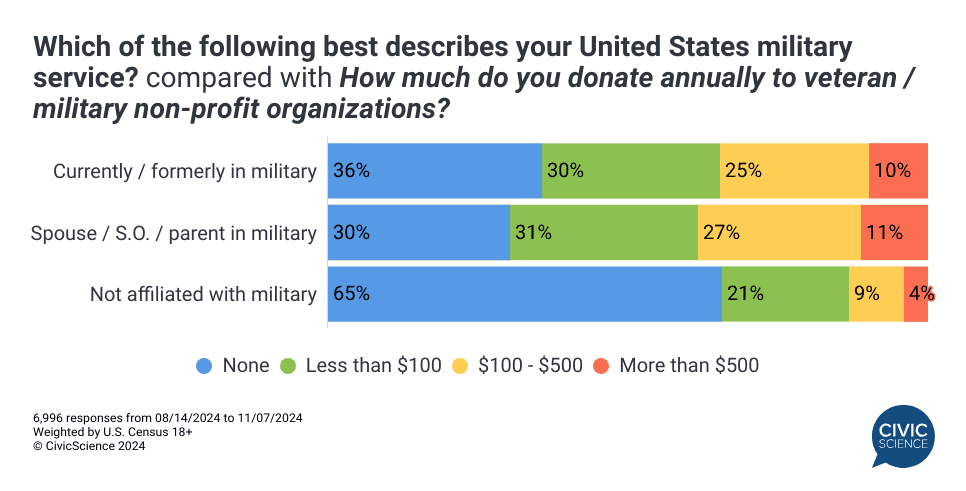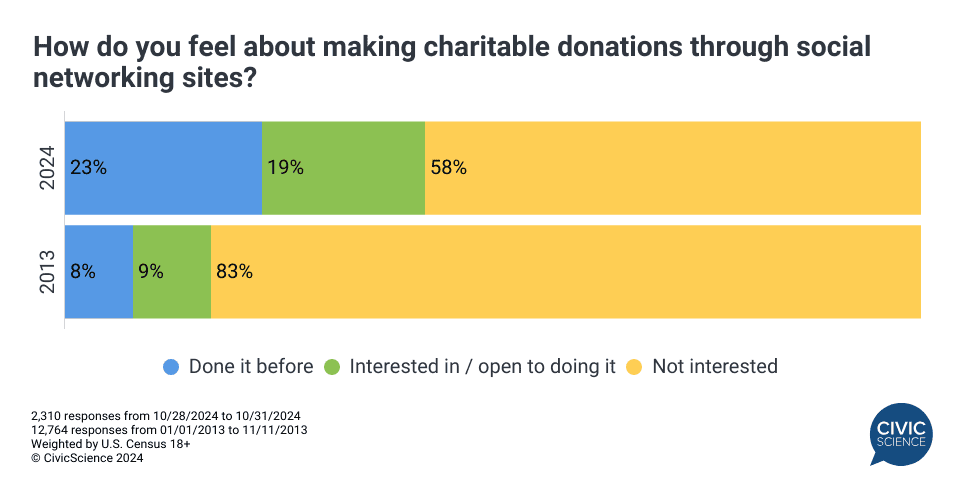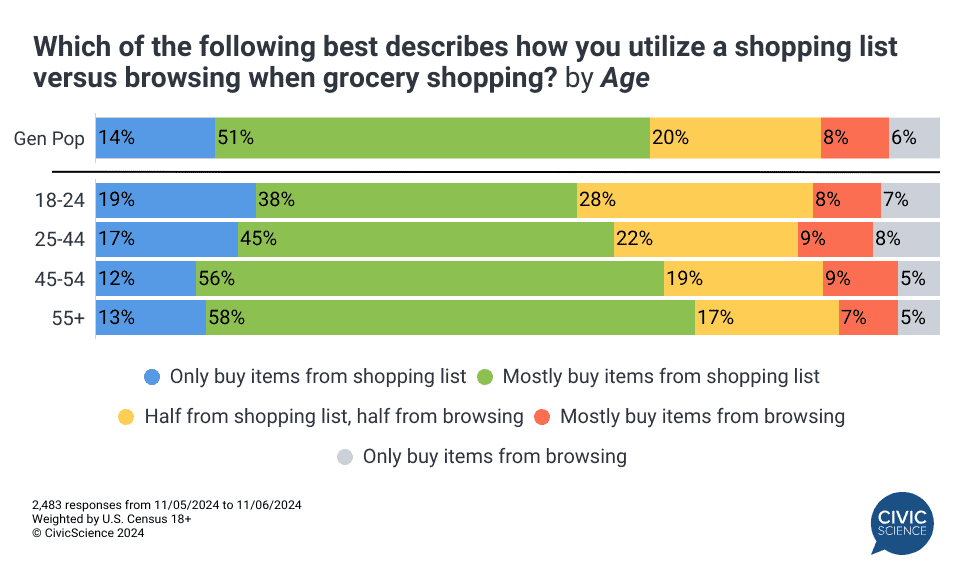This is just a sneak peek at the thousands of consumer insights available to CivicScience clients. Discover more data.
1. The state of America’s veterans remains a strong concern.
With Veteran’s Day yesterday, the state of veteran’s affairs remains a significant topic for many Americans. In fact, 85% of U.S. adults report being somewhat or very concerned about issues impacting military veterans. For some, Veteran’s Day serves as an opportunity to show support by donating to veteran-focused nonprofits and military charities.
Unsurprisingly, Americans who are ‘very’ concerned about veteran issues are more likely to make annual contributions to these organizations. Americans with a current or prior connection to military service also are more likely to donate, while 13% of those who have no affiliation with the military say they donate at least $100 annually.

2. Americans are becoming more open to making charitable donations via social media amid GoFundMe’s new partnership with Meta.
GoFundMe and Meta have unveiled new tools for Instagram and Facebook designed to simplify how donors and nonprofits share and fundraise for meaningful causes. Charitable giving via social media has surged in the last decade: since 2013, the share of Americans donating through social media has nearly tripled, while those open to donating this way have more than doubled during the same time period.
However, additional data show most Americans prefer donating directly through a charity organization’s website or app or in-person at a retailer or event. Only about three percent currently prefer to donate via social media.

Weigh in: Do you think social media are effective in raising funds for good causes?
3. Most Americans stick to their list when grocery shopping, but a noteworthy percentage are spontaneous purchasers.
This week, CivicScience examined how carefully Americans plan their grocery shopping. Just over half of consumers report generally sticking to their shopping lists but still adding a few extra items as they shop. Meanwhile, 14% strictly adhere to their lists without any additional purchases. On the other hand, 14% rely primarily on in-store browsing, with 8% buying ‘most’ of their groceries spontaneously and 6% making all their selections while browsing rather than following a pre-planned list.
Interestingly, younger adults are a bit more disciplined than older adults, showing a stronger tendency to stick to their lists. However, they’re also more inclined to make at least half of their purchase decisions on the spot while browsing the aisles.

Cast Your Vote: When grocery shopping do you typically use a list or do you wing it?








